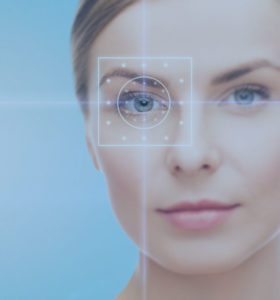New Tool Detects Pressure Non-invasively

Non-invasive tool may be instrumental in evaluating elevated ICP – a symptom of hydrocephalus and shunt malfunction.
Individuals living with hydrocephalus are all too familiar with the methods to detect increased pressure inside the head, an indicator that their shunt or ETV are not working optimally. Often it’s trips to the doctor’s office or the ER for a CT scan or MRI. Sometimes a member of the neuro team will tap the shunt by inserting a needle into the bulb (antechamber) of the valve to withdraw fluid, a subjective way to see how easily the fluid comes out while relieving pressure. However, this can leave a patient vulnerable to infection. In some cases it can mean the surgical implantation of an intracranial pressure (ICP) monitor; a tube protruding from the skull while reaching into the brain to measure fluid pressure, which also can allow for draining of extra fluid and sometimes the administration of antibiotics. What if there was a way to detect increased pressure non-invasively with a simple eye test? What if this could be done at your family doctor’s office? That future may soon be a reality.
What Can the Eyes Tell Us?
When a physician asks you to follow the movement of a finger up, down, or laterally, s/he is crudely assessing the movement of your eyeball. Cranial nerves (CN) innervate the muscles that move the eyeball. They are CN III (oculomotor nerve (N.),CN IV (trochlear N.) and CN VI (abducens N.). Elevated ICP exerts downward pressure on the brainstem which affects the function of the cranial nerves; impacting, among other things, the movement of the eye muscles controlled by CNs III, IV, and VI. Elevated ICP delays axoplasmic transport (a cellular process within nerve cells that moves materials to and from the nucleus) along cranial nerves. Eye tracking technology measures the function of the muscles by assessing their ability to move the eye, allowing for the detection of elevated pressure inside the skull non-invasively. It is a 21st-century version of the simple “follow my finger” test by applying computer technology to facilitate and quantify assessment.
The device called the “EyeBox” tracking system, developed by Oculogica, Inc. is a relatively simple device that non-invasively follows eye movements while a subject watches music videos. Analysis of graphs of eye movements tracked reveals whether there is increased pressure inside the skull. The device pairs proprietary software with an infrared scanner, a computer monitor, and standard ophthalmological equipment that consumers might expect when getting their vision checked. The subject places his/her chin on a support in a metal frame and then watches a 4-minute video that slowly moves around a computer screen. An infrared scanner makes 500 readings per second of each pupil’s position. A computer algorithm analyzes the data to determine whether the eyes are moving in sync horizontally and vertically. When the eyes do not move in sync, additional evaluation is necessary. The technology is highly- and rapidly sensitive for detection of hydrocephalus or other causes of elevated ICP.
A recently-published study (“Elevated intracranial pressure and reversible eye-tracking changes detected while viewing a film clip”, J. Neurosurg June 2, 2017), presents data collected from 23 patients (12 women, 11 men, mean age 46.8 years) in the neurosurgical intensive care unit who were awake but had problems such as brain bleeding, trauma, stroke or tumors requiring ICP monitoring with a drainage catheter implanted to measure pressure. On 55 occasions, patients watched music videos and film clips while the eye-tracking camera measured vertical and horizontal eye movements for 220 seconds. With increased ICP, decreased function of the nerves moving the eye was detected with eye-tracking. Decreased lateral eye movements showed the strongest correlation with elevated ICP. Individual patients had normal tracking at lower pressures and decreased eye movement at higher pressures regardless of whether the high or low pressure occurred first. The study documented correlations between intracranial pressure and eye function in 55 tests, with the strongest correlations showing up between out-of-sync horizontal eye movements and increased head pressure.
The technology was developed by Uzma Samadani, M.D., Ph.D., who then founded Oculogica Inc. a company that has licensed exclusive worldwide rights for commercialization of the technology. The company had its first patent, for detection of cranial nerve palsies and elevated ICP, issued this year. The company is currently applying for FDA clearance for eye-tracking technology. The development of this technology has numerous applications in neurosurgery and neurology.
